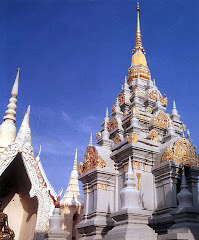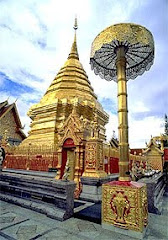Sukhothai was the first Thai kingdom. It was founded in 1238 by two Thai governors, Khun Bang Klang Thao (Sri Inthrathit) and Khun Pha Muang who rebelled against the Khmers and brought independence to the region. The Sukhothai period is characterized as one of rapid growth and prosperity, and is considered to be a golden age of Thai culture. Sukhothai gained independence in 1238 and quickly expanded its sphere of influence.
Although animistic beliefs remained potent in Sukhothai, King Ramkhamhaeng and his successors were all devout Buddhist rulers who made merit on a large scale. The major cities of the Sukhothai kingdom were, therefore, full of monasteries, many of which were splendid examples of Thai Buddhist architecture. Sukhothai adopted the Ceylonese school of Theravada Buddhism, beginning with King Ramkhamhaeng's invitation to Ceylonese monks to come over and purify Buddhism in his kingdom. This Ceylonese influence manifested itself not only in matters of doctrine but also in religious architecture. The bell-shaped stupa, so familiar in Thai religious architecture, was derived from Ceylonese models. Sukhothai style Buddha images are distinctive for their elegance and stylized beauty, and Sukhothai's artists introduced the graceful form of the "walking Buddha" into Buddhist sculpture.
Sukhothai's cultural importance in Thai history also derives from the fact that the Thai script evolved into a definite form during King Ramkhamhaeng's time, taking as its models the ancient Mon and Khmer scripts. Indeed, this remarkable king is credited with having invented the Thai script.
Technorati tags : Sukhothai Period /Thailand Temple /Buddhism /thai temple










No comments:
Post a Comment